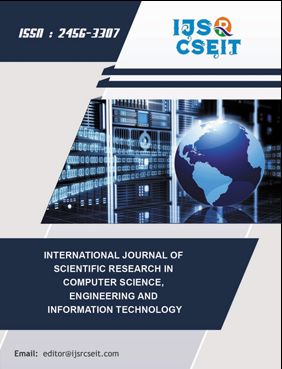Decoding Wildlife Habitat Shifts in a Changing Environment Through Machine Learning
DOI:
https://doi.org/10.32628/CSEIT25111224Keywords:
Wildlife Habitat, Data Analytics, Machine Learning, GIS, Species Distribution, Climate Change, Real-time Data CollectionAbstract
Climate change affects wildlife habitats. Data analytics and machine learning have been used in this study, which focused on different ecosystems in the state of Virginia. In this paper, we propose a holistic approach that integrates climate data from the Open-Meteo API and wildlife observations from the iNaturalist API during the years 2020-2023 using real-time data collection, machine learning models, and interactive visualization techniques. Our approach uses ensembling machine learning methods such as XGBoost, Random Forest, and Gradient Boosting classifiers with 85% accuracy using only climate variables as predictors of wildlife presence. Among them, very strong correlations between temperature patterns and observations of wildlife were found (r = 0.72, p < 0.001); temperature range and seasonal timing explained about 65% of the model fit. We developed an interactive web-based dashboard using Dash that visualizes temporal trends and spatial distributions. This study informs conservation planning and habitat management decisions in the face of climate change and demonstrates how the integration of multi-analytical approaches and real-time data collection provides detailed insights into complex ecological relationships.
📊 Article Downloads
References
Visser, M. E. (2008). Keeping up with a warming world; assessing the rate of adaptation to climate change. Proceedings of the Royal Society B: Biological Sciences, 275(1635), 649-659.
Thomas, C. D., Cameron, A., Green, R. E., Bakkenes, M., Beaumont, L. J., Collingham, Y. C., ... & Williams, S. E. (2004). Extinction risk from climate change. Nature, 427(6970), 145-148. DOI: https://doi.org/10.1038/nature02121
Byrd, K. B., Flint, L. E., Alvarez, P., Casey, C. F., Sleeter, B. M., Soulard, C. E., ... & Sohl, T. L. (2015). Integrated climate and land use change scenarios for California rangeland ecosystem services: wildlife habitat, soil carbon, and water supply. Landscape Ecology, 30, 729-750. DOI: https://doi.org/10.1007/s10980-015-0159-7
Aspinall, R., & Matthews, K. (1994). Climate change impact on distribution and abundance of wildlife species: an analytical approach using GIS. Environmental Pollution, 86(2), 217-223. DOI: https://doi.org/10.1016/0269-7491(94)90193-7
Meehl, G. A., & Tebaldi, C. (2004). More intense, more frequent, and longer lasting heat waves in the 21st century. Science, 305(5686), 994-997. DOI: https://doi.org/10.1126/science.1098704
Tuanmu, M. N., Viña, A., Roloff, G. J., Liu, W., Ouyang, Z., Zhang, H., & Liu, J. (2011). Temporal transferability of wildlife habitat models: implications for habitat monitoring. Journal of Biogeography, 38(8), 1510-1523 DOI: https://doi.org/10.1111/j.1365-2699.2011.02479.x
Viña, A., Bearer, S., Zhang, H., Ouyang, Z., & Liu, J. (2008). Evaluating MODIS data for mapping wildlife habitat distribution. Remote Sensing of Environment, 112(5), 2160-2169. DOI: https://doi.org/10.1016/j.rse.2007.09.012
Singleton, M. P., Thode, A. E., Meador, A. J. S., & Iniguez, J. M. (2019). Increasing trends in high-severity fire in the southwestern USA from 1984 to 2015. Forest ecology and management, 433, 709-719. DOI: https://doi.org/10.1016/j.foreco.2018.11.039
Gilpin, M. E. (1987). Spatial structure and population vulnerability. Viable populations for conservation, 125-139. DOI: https://doi.org/10.1017/CBO9780511623400.008
Grubb, T. G., & King, R. M. (1991). Assessing human disturbance of breeding bald eagles with classification tree models. The Journal of wildlife management, 500-511. DOI: https://doi.org/10.2307/3808982
Aspinall, R. (1992). An inductive modelling procedure based on Bayes' theorem for analysis of pattern in spatial data. International Journal of Geographical Information Systems, 6(2), 105-121. DOI: https://doi.org/10.1080/02693799208901899
Team, R. C. (2020). RA language and environment for statistical computing, R Foundation for Statistical. Computing.
Gillson, L., Dawson, T. P., Jack, S., & McGeoch, M. A. (2013). Accommodating climate change contingencies in conservation strategy. Trends in Ecology & Evolution, 28(3), 135-142. DOI: https://doi.org/10.1016/j.tree.2012.10.008
Catano, C. P., Romanach, S. S., Beerens, J. M., Pearlstine, L. G., Brandt, L. A., Hart, K. M., ... & Trexler, J. C. (2015). Using scenario planning to evaluate the impacts of climate change on wildlife populations and communities in the Florida Everglades. Environmental Management, 55, 807-823. DOI: https://doi.org/10.1007/s00267-014-0397-5
Watling, J. I., Romanach, S. S., Bucklin, D. N., Speroterra, C., Brandt, L. A., Pearlstine, L. G., & Mazzotti, F. J. (2012). Do bioclimate variables improve performance of climate envelope models?. Ecological Modelling, 246, 79-85. DOI: https://doi.org/10.1016/j.ecolmodel.2012.07.018
McRae, B. H., Schumaker, N. H., McKane, R. B., Busing, R. T., Solomon, A. M., & Burdick, C. A. (2008). A multi-model framework for simulating wildlife population response to land-use and climate change. Ecological modelling, 219(1-2), 77-91. DOI: https://doi.org/10.1016/j.ecolmodel.2008.08.001
Bucklin, D. N., Watling, J. I., Speroterra, C., Brandt, L. A., Mazzotti, F. J., & Romanach, S. S. (2013). Climate downscaling effects on predictive ecological models: a case study for threatened and endangered vertebrates in the southeastern United States. Regional Environmental Change, 13, 57-68. DOI: https://doi.org/10.1007/s10113-012-0389-z
Di Cecco, G. J., Barve, V., Belitz, M. W., Stucky, B. J., Guralnick, R. P., & Hurlbert, A. H. (2021). Observing the observers: How participants contribute data to iNaturalist and implications for biodiversity science. BioScience, 71(11), 1179-1188. DOI: https://doi.org/10.1093/biosci/biab093
Rodríguez, L. R., Delgado, M. G., Medina, D. C., Ramos, J. S., & Domínguez, S. Á. (2024). Forecasting urban temperatures through crowdsourced data from Citizen Weather Stations. Urban Climate, 56, 102021. DOI: https://doi.org/10.1016/j.uclim.2024.102021
Bentéjac, C., Csörgő, A., & Martínez-Muñoz, G. (2021). A comparative analysis of gradient boosting algorithms. Artificial Intelligence Review, 54, 1937-1967. DOI: https://doi.org/10.1007/s10462-020-09896-5
Chen, T., & Guestrin, C. (2016, August). Xgboost: A scalable tree boosting system. In Proceedings of the 22nd acm sigkdd international conference on knowledge discovery and data mining (pp. 785-794). DOI: https://doi.org/10.1145/2939672.2939785
Suma, K. G., Sunitha, G., Avanija, J., Galety, M. G., & Varna, C. P. (2024). Geospatial Data Visualization With Folium. In Geospatial Application Development Using Python Programming (pp. 187-208). IGI Global. DOI: https://doi.org/10.4018/979-8-3693-1754-9.ch007
Downloads
Published
Issue
Section
License
Copyright (c) 2025 International Journal of Scientific Research in Computer Science, Engineering and Information Technology

This work is licensed under a Creative Commons Attribution 4.0 International License.




